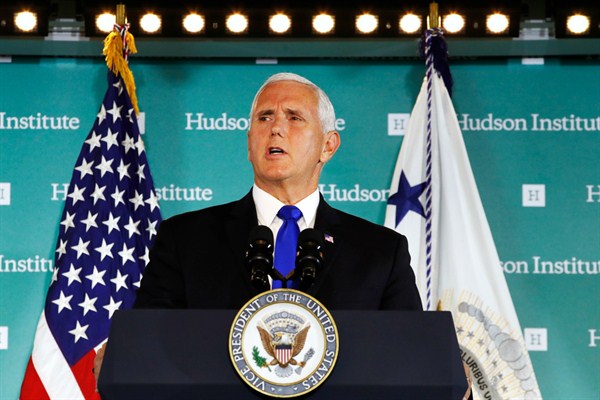In a speech last week that seemed as much an effort to catch up to recent events as a formal declaration of policy, Vice President Mike Pence put Beijing on notice that “the United States of America has adopted a new approach to China.”
The address, delivered at the Hudson Institute think tank in Washington, for the most part covered familiar ground in terms of American grievances with the bilateral relationship. Having spent the past 20 years seeking to invite China into the international order as a “responsible stakeholder,” the U.S. has now run out of patience over Beijing’s unfair trade practices, domestic repression and assertive militarization of the South China Sea. Perhaps scrambling to lend weight to President Donald Trump’s recent charge of Chinese interference in America’s midterm congressional elections, Pence also added a new item to the list: “a whole-of-government approach, using political, economic and military tools, as well as propaganda,” that China is deploying “to advance its influence and benefit its interests in the United States.”
Whether as a candidate or president, Trump’s China policy has confounded observers, as it has lurched chaotically from provocation to engagement and back again. During the 2016 campaign, he vilified China for devaluing the yuan—although Beijing had already allowed its currency to rise—and for the bilateral trade imbalance. During the transition, he outraged Beijing by taking a congratulatory call from Taiwanese President Tsai Ing-wen and questioning the sanctity of the "one China" policy. He later appointed noted China hawk Peter Navarro to his inner circle of trade advisers and threatened retaliatory tariffs.

